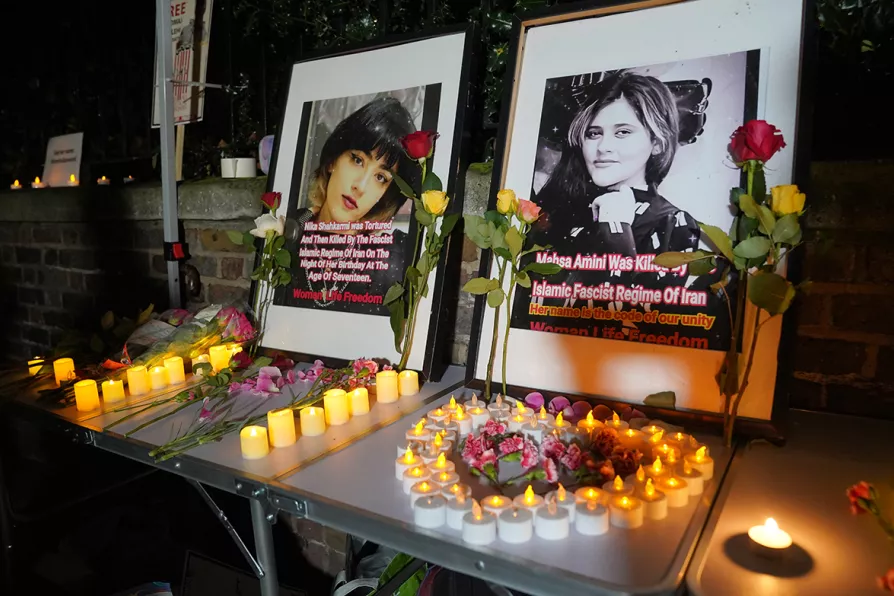Once the bustling heart of Christian pilgrimage, Bethlehem now faces shuttered hotels, empty streets and a shrinking Christian community, while Israel’s assault on Gaza and the tightening grip of occupation destroy hopes of peace at the birthplace of Christ, writes Father GEOFF BOTTOMS

 Floral tributes and candles outside the Iranian Embassy in southwest London, as protesters take part in a demonstration, October 30, 2023
Floral tributes and candles outside the Iranian Embassy in southwest London, as protesters take part in a demonstration, October 30, 2023
AMID the ongoing outrage being perpetrated against the Palestinian people right before the very eyes of the world, which quite rightfully dominates headlines internationally, the theocratic dictatorship in Iran continues to lurch headlong from one major crisis into another.
Its governing doctrine of “political Islam” has utterly bankrupted and failed Iran and its people and continues to do so. The recent presidential “elections” charade underlines the reality that the current political and socioeconomic model is completely unreformable.
Over 40 years on from the Islamists’ hijacking and defeat of the Popular 1979 Revolution, which ousted the Shah’s monarchical dictatorship, the theocratic regime now presides over a situation of ruin for most ordinary Iranians.

Payam Solhtalab talks to GAWAIN LITTLE, general secretary of Codir, about the connection between the struggle for peace, against banking and economic sanctions, and the threat of a further military attack by the US/Israel axis on Iran

The Islamic Republic is attempting to deflect from its own failures with a scapegoating campaign against vulnerable and impoverished migrants, writes JAMSHID AHMADI

In the second of two articles, STEVE BISHOP looks at how the 1979 revolution’s aims are obfuscated to create a picture where the monarchists are the opposition to the theocracy, not the burgeoning workers’ and women’s movement on the streets of Iran











